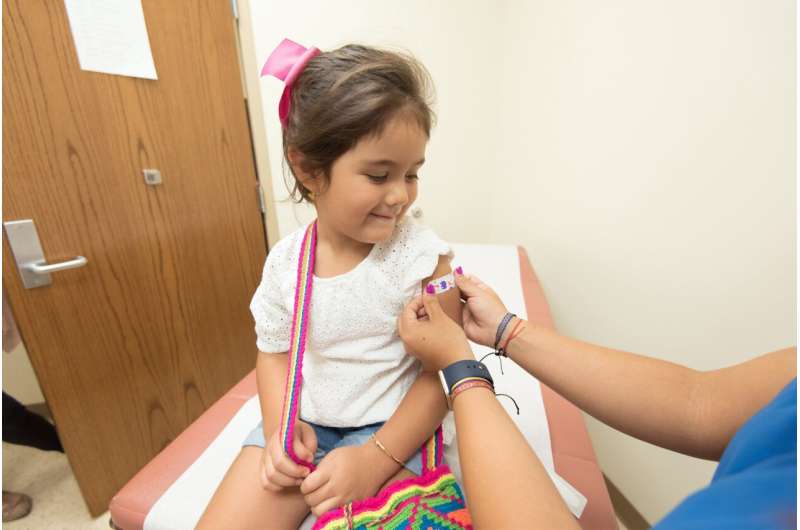This article has been reviewed according to Science X's editorial process and policies. Editors have highlighted the following attributes while ensuring the content's credibility:
fact-checked
peer-reviewed publication
trusted source
proofread
Millions of kids in US have inadequate health care coverage

Inadequate health coverage is a particular problem for commercially insured children, according to a new study released by Columbia University Mailman School of Public Health. The research shows that coverage gaps are affecting publicly insured children as well. Until now, prior research had focused on documenting rates and trends in insurance consistency for children covered by all insurance types. The findings are published in JAMA Health Forum.
"While uninsurance among children has generally been declining in the U.S., our results highlight the need for a renewed focus on making sure that children's coverage is affordable for families and provides the benefits that children need" said Jamie Daw, Ph.D., assistant professor of health policy and management at Columbia Mailman School of Public Health.
Using representative data from the 2016-2021 National Survey of Children's Health, the researchers analyzed parent- or caregiver-reported information on health insurance data for children from age 0-17 and also compared changes during COVID-19, identifying inconsistent and inadequate coverage within each insurance type.
Inadequate insurance was defined by failure to meet three criteria: benefits were sufficient to meet a child's needs; coverage allowed a child to see needed health care providers; and reasonable annual out-of-pocket payments for child's health care.
Inconsistent coverage was three times higher among publicly compared to commercially-insured children. However, inadequate insurance was more prevalent overall, affecting nearly 1 in 5 U.S. children (16.5 million annually), with particularly high rates among the commercially-insured. The researchers also found that the child and family characteristics associated with higher rates of inconsistent and inadequate coverage differed by insurance type.
Of the sample of 203,691 insured children, 34.5% were publicly-insured and 65.5% were commercially-insured. Compared to commercially-insured children, publicly-insured children had higher rates of inconsistent coverage (4.2 vs. 1.4%,) and lower rates of inadequate coverage (12 vs. 33%). Relative to 2016-19, inconsistent insurance decreased by 42% for publicly-insured children and inadequate insurance decreased by 6%, for commercially-insured children during COVID.
In summary, the findings indicate:
- 1 in 5 children in the U.S. have inadequate health insurance, i.e. insurance that either carries unreasonable out-of-pocket costs or doesn't have benefits that meet the child's medical needs.
- Inadequate coverage is particularly high among kids with commercial insurance (approximately 1 in 3 commercially insured vs. 1 in 10 publicly insured kids).
- Insurance gaps (i.e. periods without coverage) are more common for publicly insured children.
- Both commercial insurance adequacy and public insurance gaps decreased significantly during the COVID-19 pandemic when there were additional subsidies for commercial insurance and requirements for states to keep Medicaid beneficiaries enrolled.
- With protections winding down in 2023 following COVID, many publicly insured children are losing coverage which will reverse the gains in consistent coverage that were seen during the pandemic.
- More needs to be done to protect commercially insured families against high out-of-pocket costs for child's health care and make sure that benefits/provider networks are sufficient to meet children's needs.
Also, Daw and colleagues note there is a particular need for state Medicaid programs to conduct targeted outreach and linguistically and culturally competent navigation assistance for immigrant families.
"Federal COVID-19 relief policies prevented states from disenrolling children on Medicaid and instituted enhanced subsidies for private Marketplace coverage. Our study findings suggest these policies made an important difference for families during the pandemic: publicly insured children had fewer coverage gaps and coverage was more affordable for commercially insured children. Policymakers should be actively considering how to maintain and build on these gains," noted Daw.
Co-authors are Sarra Yekta, Columbia Mailman School of Public Health; Faelan Jacobson-Davies and Lindsay Admon University of Michigan; and Stephen Patrick, Vanderbilt University Medical Center.


















